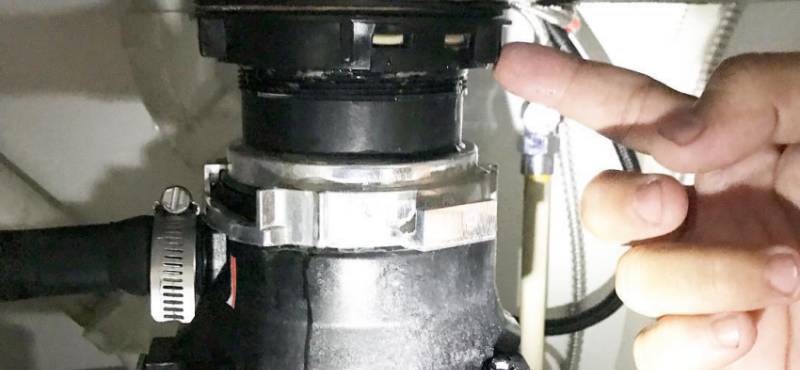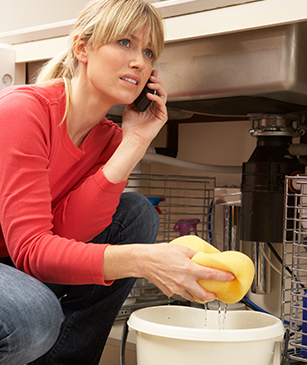My Comprehensive Guide to Fixing a Leaky Garbage Disposal
My Comprehensive Guide to Fixing a Leaky Garbage Disposal
Blog Article
Presented here in the next paragraph you will discover a bunch of worthwhile details pertaining to How to fix a pretty consistent leak from my garbage disposal.

Garbage disposals are necessary kitchen area appliances that aid in taking care of food waste efficiently. However, a dripping garbage disposal can be a frustrating and unpleasant issue to deal with. Fortunately, several leakages can be fixed easily with a couple of basic actions. In this write-up, we will certainly go over how to repair a dripping garbage disposal efficiently.
Introduction
Waste disposal unit are set up under kitchen area sinks and are made to shred food waste right into smaller sized items, permitting it to go through the pipes system easily. While these tools are normally trusted, leaks can happen with time due to deterioration, loose connections, or damages to the device.
Usual Sources Of Leaks in Rubbish Disposals
Worn Seals and Gaskets
Seals and gaskets play an essential function in stopping water from dripping out of the waste disposal unit. With time, these parts can deteriorate, resulting in leaks around the disposal system.
Loose Connections
The links in between the waste disposal unit and the pipes system can end up being loose gradually, triggering water to leak out during operation.
Cracks or Openings in the Disposal System
Physical damages to the garbage disposal, such as cracks or openings in the real estate, can likewise cause leakages.
Determining the Source of the Leak
Prior to trying to take care of a leaking garbage disposal, it is vital to identify the source of the leak. This can commonly be done through aesthetic evaluation or by conducting straightforward tests.
Visual Evaluation
Check the waste disposal unit device meticulously for any kind of indicators of water leakage. Pay very close attention to areas around seals, gaskets, and link points.
Testing for Leakages
One method to test for leakages is by running water with the disposal device and checking for any visible indicators of leakage.
Tools and Products Needed for Dealing With a Leaking Garbage Disposal
Prior to beginning the repair process, gather the required devices and products, consisting of a screwdriver, flexible wrench, plumbing technician's putty, substitute seals or gaskets, and epoxy or patching product for fixing fractures or holes.
Step-by-Step Overview to Fixing a Leaking Garbage Disposal
Switch off the Power
Prior to trying any type of repair work, make sure that the power to the waste disposal unit device is switched off to prevent the danger of electric shock.
Locate the Leak
Recognize the specific area of the leak and figure out the cause.
Tighten up Connections
Make use of a wrench to tighten any loosened connections in between the disposal system and the pipes system.
Replace Seals or Gaskets
If the leak results from worn seals or gaskets, get rid of the old elements and replace them with brand-new ones.
Patching Splits or Holes
For splits or holes in the disposal device, usage epoxy or a suitable patching product to secure the broken area.
Examining the Waste Disposal Unit After Repair
As soon as the repair service is full, evaluate the garbage disposal by running water via it to make certain that the leak has actually been settled.
Preventive Maintenance Tips to Avoid Future Leakages
To avoid future leaks, it is necessary to execute routine maintenance on your waste disposal unit. This includes maintaining it clean, staying clear of putting non-food things or hard items down the disposal, and periodically looking for leakages or various other issues.
Final thought
Finally, repairing a dripping garbage disposal is a reasonably simple process that can be finished with basic tools and products. By adhering to the actions outlined in this short article and exercising preventative upkeep, you can maintain your garbage disposal in good working condition and prevent expensive fixings in the future.
HERE’S HOW TO FIX YOUR GARBAGE DISPOSAL
WHAT TO DO IF SOMETHING IS STUCK IN YOUR GARBAGE DISPOSAL
If the impeller won’t turn, there’s probably something stuck in the disposal. It could be a steak bone or peach pit, although plumbers report pulling all sorts of inappropriate objects out of disposals, such as bottle caps or aluminum foil. Make sure power to the disposal is off, and look inside to see if you can see the source of the jam.
Never stick your fingers in a disposal. Pull out anything you see with tongs or pliers.
If the disposal still won’t work, it may be time to call a plumber or consider buying a new disposal. GEM Plumbing & Heating is here for all of your garbage disposal needs.
WHAT TO DO IF YOUR GARBAGE DISPOSAL DRAIN IS CLOGGED
Take everything out from underneath your sink and put a bucket or other container under your disposal to catch any water that drains out. Disconnect your disposal from the power supply. If it’s plugged into a wall outlet, unplug it. If it’s hardwired into an electrical box, go to the electrical panel and turn off the breaker for the disposal. Pour ¼ cup of baking soda into the drain, followed by ½ cup of white vinegar. Give the solution a few minutes to fizz and do its work. Look into the disposal with a flashlight to see if you can see an object that might be causing the clog. If you see it, remove it using tongs or pliers. MORE TIPS ON DEALING WITH A CLOGGED GARBAGE DISPOSAL
Never use drain cleaner in a garbage disposal. It can damage the plastic parts inside the disposal. You can also be splashed with the caustic liquid while working to clear the clog. Beware! Never stick your fingers into a garbage disposal. Trust us — not a good idea. In many instances, your dishwasher drains through your garbage disposal. This allows the disposal to grind any large food particles that may be drained out of your dishwasher. There are some jurisdictions, however, where the plumbing code prohibits such a connection. WHAT TO DO WHEN YOUR DISHWASHER DRAINS THROUGH THE DISPOSAL
Run some water in the sink so your plunger has at least a ½-inch of water to create a seal and plunge vigorously up and down several times. You may need to repeat this several times. Run hot water down the drain to clear any residue that remains.

I stumbled upon that entry about Why Is while doing a lookup on the web. Remember to take the opportunity to share this blog posting if you appreciated it. Thanks for your time invested reading it.
Book Today! Report this page